Disclosure: This article contains affiliate links. We may earn a commission from purchases at no extra cost to you, which helps our travel content.
The rhythm of crashing waves has always been my favorite melody – a natural soundtrack that follows me from my childhood fishing trips in the Gulf of Mexico to my current life producing music in Rio. But there's something particularly enchanting about the percussive symphony of South India's coastline that keeps pulling me back. While most travelers flock to Goa's well-trodden shores, the true magic happens when you venture beyond, into the lesser-explored coastal stretches where time seems to slow and authenticity reigns supreme. Having spent two transformative weeks tracing the southern peninsula's edge last winter, I'm here to share eight beach paradises that remain delightfully untouched by mass tourism – places where fishing communities thrive, cultural traditions endure, and the connection between land and sea feels almost spiritual. Pack your sarongs and sense of adventure; we're heading off the beaten path to discover South India's most precious coastal secrets.
Marari Beach: Kerala's Serene Fishing Haven
Just an hour south of the bustling backwater hub of Alappuzha lies Marari, a beach that feels like stepping into Kerala's soul. Unlike its famous neighbor Kovalam, Marari remains refreshingly authentic – a working beach where fishermen still launch their wooden boats at dawn, returning with their catches as the morning light intensifies.
My days here developed a natural rhythm: sunrise walks collecting seashells alongside local women, afternoons reading under coconut palms, and evenings watching the fishing boats return, their silhouettes dramatic against the saffron sunset. The absence of commercial water sports or beach shacks creates a meditative atmosphere that's increasingly rare in our hyperconnected world.
What makes Marari truly special is the opportunity to connect with the local fishing community. Through my homestay host, I arranged to join a morning fishing expedition – an experience that transported me back to those cherished childhood fishing trips with my grandfather. The techniques may have differed, but the fundamental connection to water and the patient art of waiting for a catch remained beautifully familiar.
Staying at Marari is best experienced through locally-owned homestays rather than resorts. My choice, a family-run property just 200 meters from the shore, offered traditional Kerala architecture with modern comforts and home-cooked meals featuring the day's fresh catch prepared with coconut, curry leaves, and local spices that danced on my palate like a perfectly balanced musical arrangement.
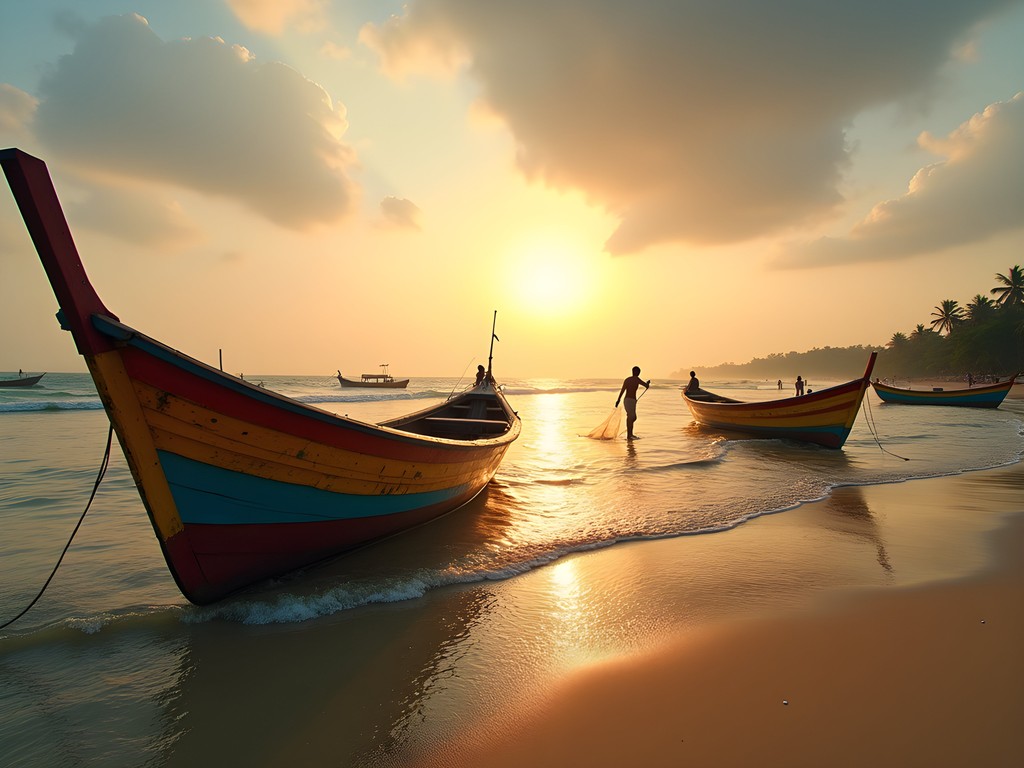
💡 Pro Tips
- Visit the local fish market around 7 AM to see the morning's catch being auctioned
- Request a cooking demonstration from your homestay host – most are happy to share their culinary traditions
- Pack reef-safe sunscreen as most local shops only carry standard varieties
Varkala's Cliff-Backed Sanctuary
While technically on the tourist map, Varkala deserves mention for striking the perfect balance between accessibility and preservation. Unlike Goa's commercialized stretches, Varkala's dramatic setting – a pristine beach backed by rust-colored cliffs rising nearly 100 feet from the Arabian Sea – creates a natural boundary that has helped limit overdevelopment.
I spent three nights at a cliff-top yoga retreat, where my mornings began with sun salutations overlooking the vast blue expanse. The metaphor wasn't lost on me – like a perfect musical composition, Varkala harmonizes natural beauty, spiritual significance (the northern end hosts the 2,000-year-old Janardana Swami Temple), and just enough infrastructure to be comfortable without feeling manufactured.
The cliff path offers a selection of restaurants serving everything from traditional Kerala fish curry to international cuisine, making it an ideal transition spot if you're new to South Indian travel. I found myself returning repeatedly to a tiny family-run place serving the most remarkable grilled kingfish with kokum curry – a slightly sweet-sour flavor profile that's distinctive to the region.
For my cliff-top accommodations, I brought my travel hammock, which proved perfect for afternoon reading sessions with the sea breeze providing natural air conditioning. The sound of waves crashing below became my production soundtrack as I recorded ambient sounds for a project I was developing – nature's percussion section at its finest.
Don't miss the less-visited Black Beach just north of the main stretch. A morning walk took me through quiet fishing villages where life continues unchanged, offering a glimpse into coastal traditions that have sustained communities for generations.
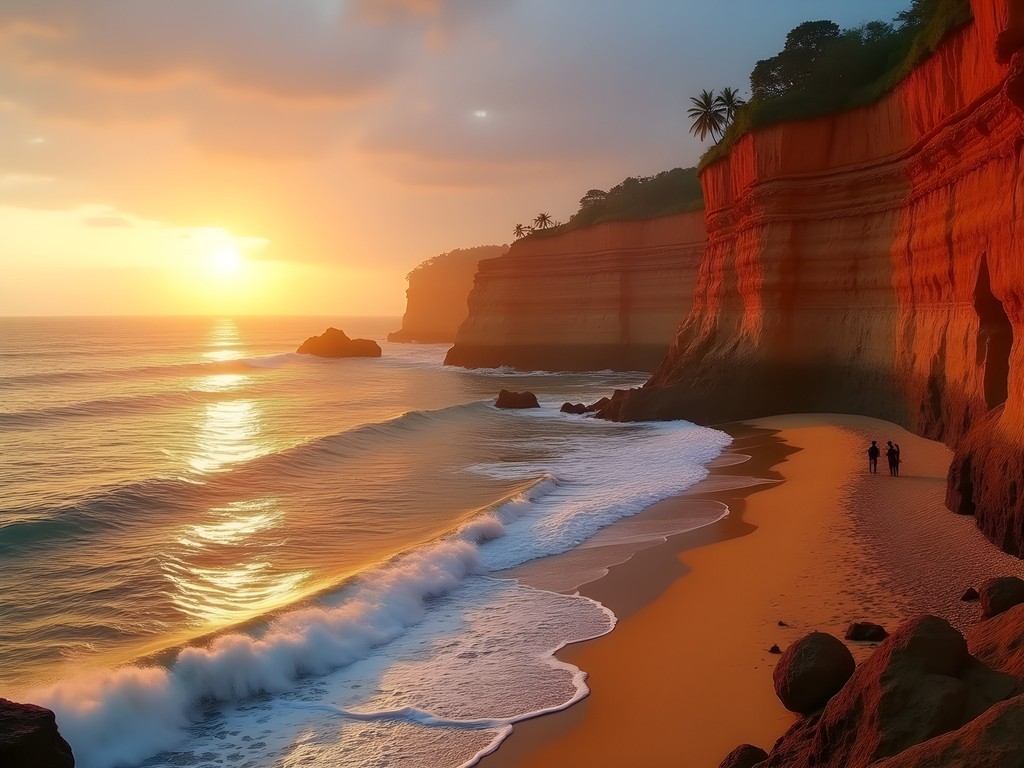
💡 Pro Tips
- Visit Papanasam Beach early morning for a quieter experience before day-trippers arrive
- Respect the cliff edge – erosion has made some sections unstable
- Book accommodations on the north cliff for a quieter stay away from the restaurant concentration
Gokarna's Sacred Shores
Moving north into Karnataka, Gokarna offers what Goa might have been decades ago – a place where spiritual significance and natural beauty coexist in perfect harmony. This temple town has gained some popularity among travelers seeking Goa alternatives, but venture just beyond the main beach and you'll discover a string of pristine coves accessible only by boat or hiking trails.
I based myself in a modest guesthouse near the town's ancient temples, using it as a launching point for daily explorations. The 5-beach trek became my meditation – a challenging but rewarding coastal hike connecting Paradise Beach, Half Moon, Om, Kudle, and Main Beach. Each has its own distinct personality, from the complete isolation of Paradise to the gentle curve of Half Moon and the spiritual symbolism of Om Beach, shaped like its namesake Sanskrit symbol.
What struck me most about Gokarna was the beautiful contradiction – Hindu pilgrims performing dawn rituals alongside backpackers practicing yoga, fishermen mending nets next to digital nomads typing on laptops. Unlike manufactured tourist experiences, this cultural convergence felt organic and respectful.
My most memorable evening came courtesy of a local fisherman who offered to take me and two friends to a hidden cove not on the tourist trail. As the sun set, he prepared a simple feast of freshly caught fish grilled over driftwood, served with lemon and local spices. We ate with our hands, the flavors intensified by the setting and company. I recorded the sound of waves in that secluded spot – a perfect bass line that later found its way into a track I produced back in my Rio studio.
For beach camping enthusiasts, I highly recommend bringing a quality headlamp – essential for navigating the beaches and trails after sunset when lighting is minimal. The stargazing opportunities here are unparalleled, and having hands-free illumination makes the experience all the more magical.

💡 Pro Tips
- Start the 5-beach trek early (7 AM) to avoid the midday heat
- Carry sufficient water and snacks as there are limited facilities between beaches
- Respect the religious significance of the town by dressing modestly when near temples
Karwar: Karnataka's Coastal Secret
Further north along Karnataka's coastline lies Karwar, a destination that rarely makes international guidebooks but holds a special place in Indian literary history as the inspiration for Rabindranath Tagore's first major works. It's this cultural significance coupled with remarkable natural beauty that drew me to explore its shores.
The centerpiece is Devbagh Beach, part of a delicate ecosystem where the Kali River meets the Arabian Sea. What makes this area extraordinary is the diversity of experiences within a small radius – pristine beaches, verdant islands, river estuaries, and the imposing Western Ghats creating a dramatic backdrop.
I spent two days exploring the five islands scattered offshore, each with its own ecosystem. Kurumgad Island, with its 7th-century temple atop a hill and surrounding beaches, became my favorite spot for snorkeling in surprisingly clear waters teeming with colorful fish. The underwater visibility reminded me of spots I've visited in the Maldives, though with a distinctly Indian coastal character.
The local naval museum offered fascinating insights into the maritime history of the region, connecting me to centuries of fishing and trading traditions that shaped these coastal communities. What struck me most was how the fishing techniques have evolved while maintaining core principles of sustainability – something my grandfather would have deeply appreciated.
For those planning to explore the islands and underwater environments, I found my underwater camera indispensable for capturing the vibrant marine life. The mangrove ecosystems and coral formations around the smaller islands deserve documentation, and having a reliable waterproof camera made all the difference.
Karwar's relative obscurity means accommodations are limited to simpler guesthouses and a few government-run resorts, but what they lack in luxury they make up for in location and authenticity. My room at a family-run guesthouse cost less than $30 per night and came with home-cooked seafood meals that rivaled fine dining experiences I've had worldwide.
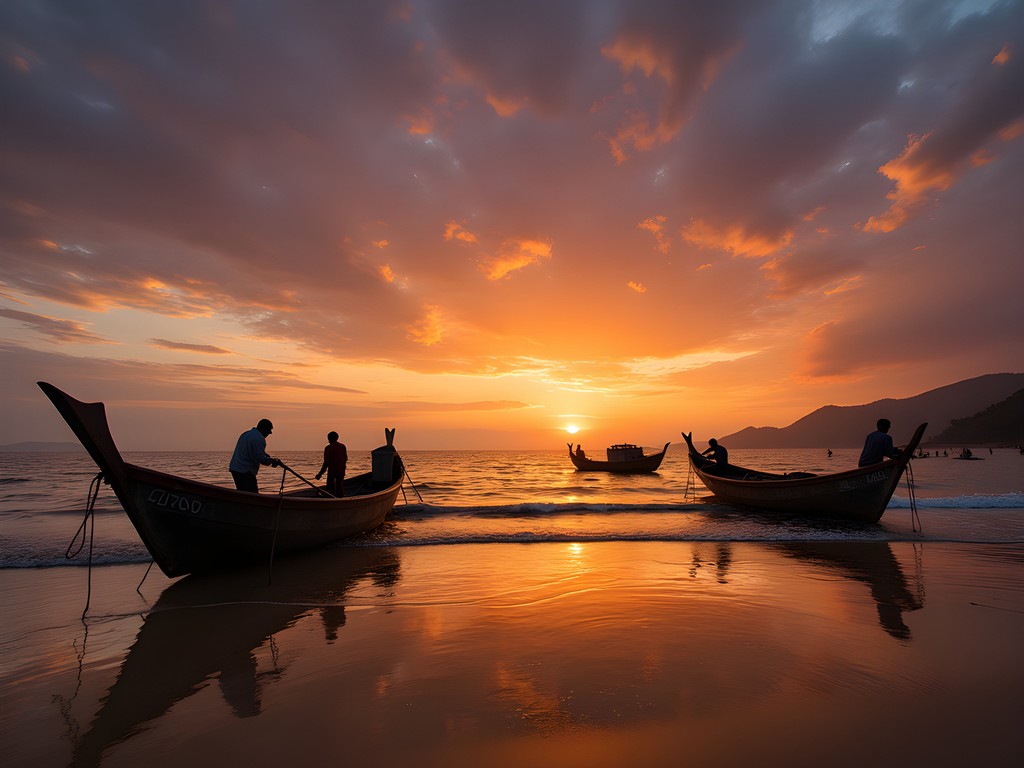
💡 Pro Tips
- Hire a local fishing boat for island hopping rather than commercial operators for a more authentic experience
- Visit the fish market by the harbor around 4 PM when boats return with their catch
- Bring binoculars for bird watching in the estuary areas where migratory species gather
Tranquebar: Tamil Nadu's Danish Colonial Beach Haven
Traveling east to Tamil Nadu's coastline reveals one of India's most unusual coastal settlements. Tranquebar (Tharangambadi) – meaning 'place of the singing waves' – stands as a fascinating Danish colonial outpost with a 400-year history that feels worlds away from typical Indian beach destinations.
The imposing Fort Dansborg, built in 1620 and remarkably well-preserved, creates a European architectural counterpoint to the traditional Tamil fishing village that surrounds it. This cultural juxtaposition creates a rhythm all its own – colonial buildings alongside Hindu temples, Danish street names with Tamil script, Lutheran churches next to colorful fishing boats.
I stayed at the meticulously restored Bungalow on the Beach, a 17th-century colonial building converted into a heritage hotel. Falling asleep to waves crashing against the seawall beneath my window connected me to centuries of history – Danish traders, missionaries, and local fishermen who all fell asleep to the same oceanic lullaby.
The beach itself stretches for miles in either direction, largely empty save for local fishing activities. Morning walks revealed intricate sand art created by tiny crabs, their patterns disappearing with each wave – nature's ephemeral art installation that reminded me of the transient beauty in both music and travel experiences.
What makes Tranquebar special is this sense of discovery – few travelers make it here, meaning your interactions with locals are genuine and unhurried. I spent an afternoon with a family that has practiced traditional wooden boat building for seven generations, watching as they shaped wood using techniques unchanged for centuries. The rhythmic sound of their tools became another track in my mental collection of coastal soundscapes.
For photography enthusiasts, the golden light at sunrise illuminating the terracotta-colored fort against the blue sea creates magical opportunities. I recommend bringing a travel tripod for those low-light morning shots – the stability makes all the difference when capturing the subtle color transitions as night gives way to day.
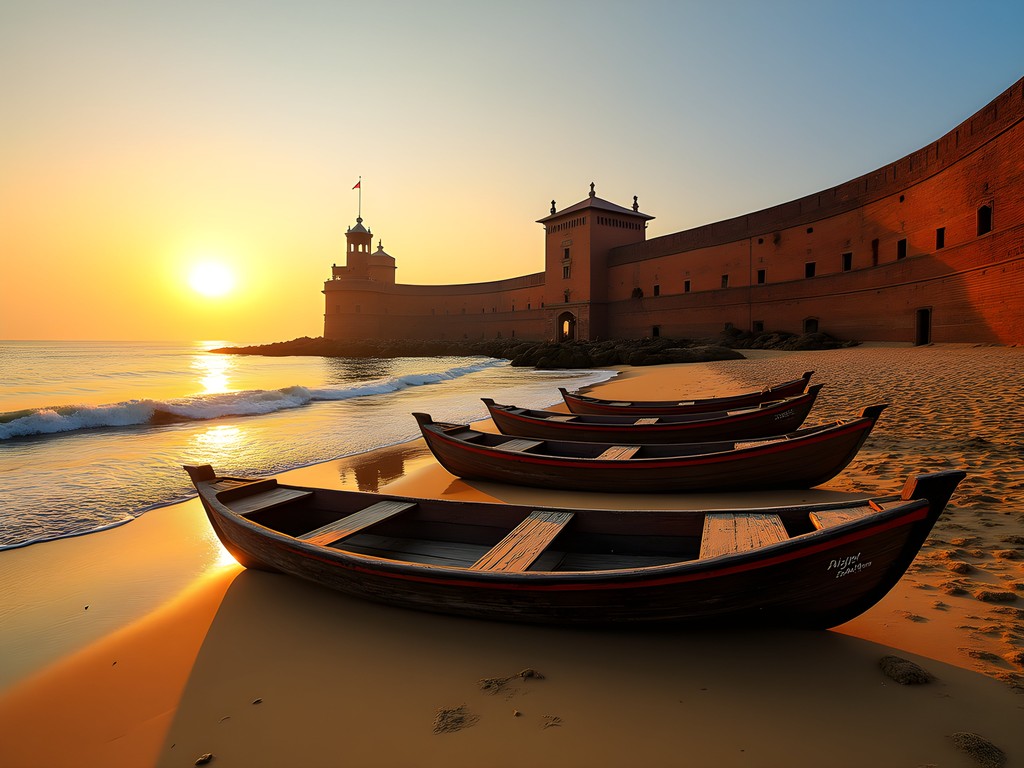
💡 Pro Tips
- Visit the Maritime Museum inside Fort Dansborg to understand the region's trading history
- Book accommodation at least a month in advance as heritage options are limited
- Learn a few basic Tamil phrases – unlike tourist areas, English is less commonly spoken here
Covelong: Tamil Nadu's Surf Culture Gem
Just 40 kilometers south of Chennai lies Covelong (Kovalam), a fishing village transformed into India's unlikely surfing capital. What makes this spot remarkable is how it maintains its traditional fishing heritage while embracing surf culture – a beautiful harmony between preservation and evolution.
Unlike manufactured beach destinations, Covelong's surf scene grew organically after the 2004 tsunami when a local fisherman's son learned to surf and began teaching others. Today, the Covelong Point Social Surf School employs local youth, creating sustainable livelihoods while preserving connection to the ocean that has sustained this community for generations.
I spent three days taking intermediate surf lessons, reconnecting with a sport I'd dabbled in during visits to Brazil's coastal towns. The waves here are perfect for learners – not too intimidating but consistent enough to provide the rush that makes surfing addictive. What made the experience special was surfing alongside local fishermen's children who have transformed their traditional ocean knowledge into surfing prowess.
Beyond surfing, Covelong offers cultural richness uncommon in surf towns. The 17th-century Dutch fort, now partially in ruins, provides a historical backdrop to beach activities. Nearby, the ancient shore temples of Mahabalipuram (a UNESCO World Heritage site) create perfect day-trip opportunities when your muscles need a break from paddling.
Accommodation options range from basic guesthouses to a few boutique properties. I chose a midrange option with a rooftop overlooking both the surf break and fishing harbor – the perfect vantage point to watch the daily transition as fishing boats return and surfboards paddle out, two different relationships with the same ocean coexisting beautifully.
For those new to surfing or looking to improve, I recommend packing a quality rash guard – the sun reflection off water is intense here, and local shops have limited options for protective gear. The investment will keep you comfortable during longer sessions and protect your skin from both sun and board rash.
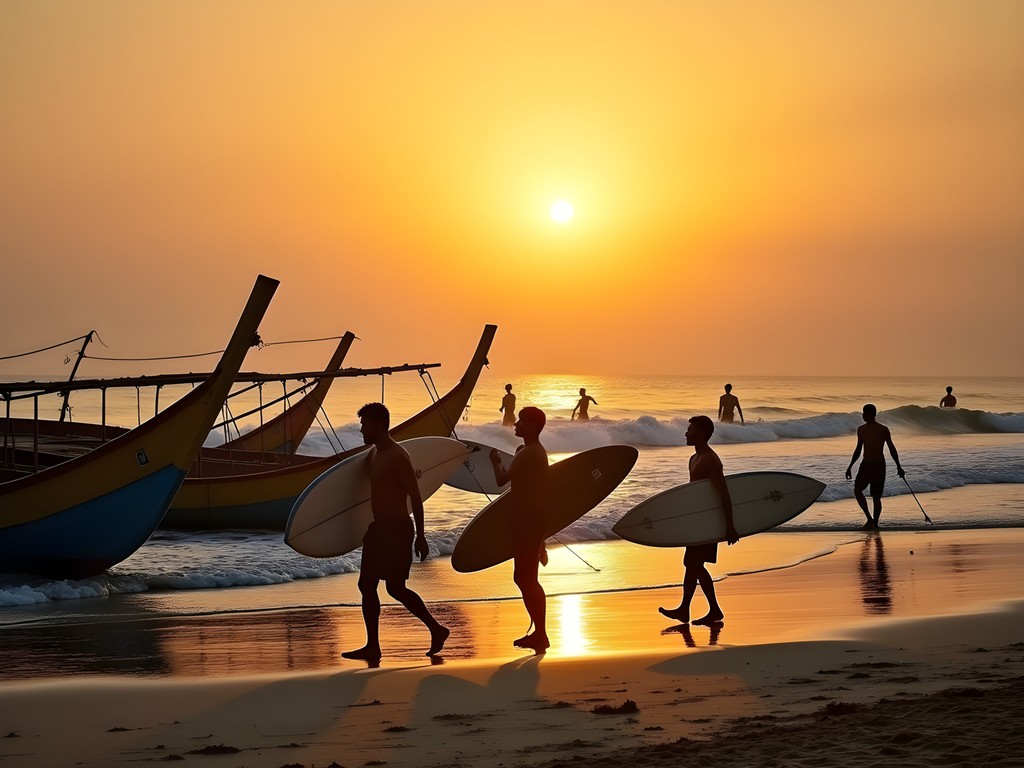
💡 Pro Tips
- Schedule surf lessons for early morning when winds are calmest and crowds minimal
- Visit the local fish market after lessons to select fresh catch that many guesthouses will prepare for you
- Respect the dual nature of the beach – certain areas are primarily for fishing activities rather than recreation
Puri's Sacred Shoreline
Venturing northeast to Odisha's coastline reveals Puri Beach – a destination that perfectly balances religious significance with natural beauty. While the main beach near Jagannath Temple sees crowds of pilgrims, just a few kilometers in either direction lie stretches of golden sand that remain blissfully untouched by mass tourism.
I timed my visit to avoid the major festival periods, allowing me to experience both the cultural richness and natural tranquility that makes Puri special. Basing myself in a guesthouse about 3km from the temple area provided the perfect balance – close enough to visit the magnificent 12th-century temple complex but far enough to enjoy peaceful beach mornings.
What distinguishes Puri's beaches is the dramatic meeting of cultural practices and coastal beauty. At sunrise, witnessing devotees taking ritual baths in the sea while fishermen prepare their boats creates a living tableau of India's spiritual and practical relationship with water. As a lifelong fisherman's granddaughter, I felt an immediate kinship with the fishing families, despite our different cultural contexts.
The seafood here deserves special mention – Odisha's coastal cuisine remains one of India's best-kept culinary secrets. Local specialties like Chungdi Malai (prawns in coconut curry) and Machha Besara (fish in mustard sauce) showcase flavor combinations I've rarely encountered elsewhere. Most evenings, I found myself at beachside shacks where the day's catch was prepared simply but perfectly.
For those interested in marine conservation, Puri offers the opportunity to witness Olive Ridley turtle conservation efforts at nearby Rushikulya Beach between December and April. Through a local guide, I arranged an early morning visit to watch recently hatched turtles make their journey to the sea – a profound reminder of nature's resilience and the importance of preservation efforts.
The less-visited northern beaches offer excellent opportunities for long walks and bird watching, particularly at Baliharchandi Beach where the Bhargavi River meets the Bay of Bengal. Here, I spent a peaceful afternoon recording the distinct sounds of coastal birds for a music project – nature's wind instruments providing perfect high notes over the rhythm of waves.
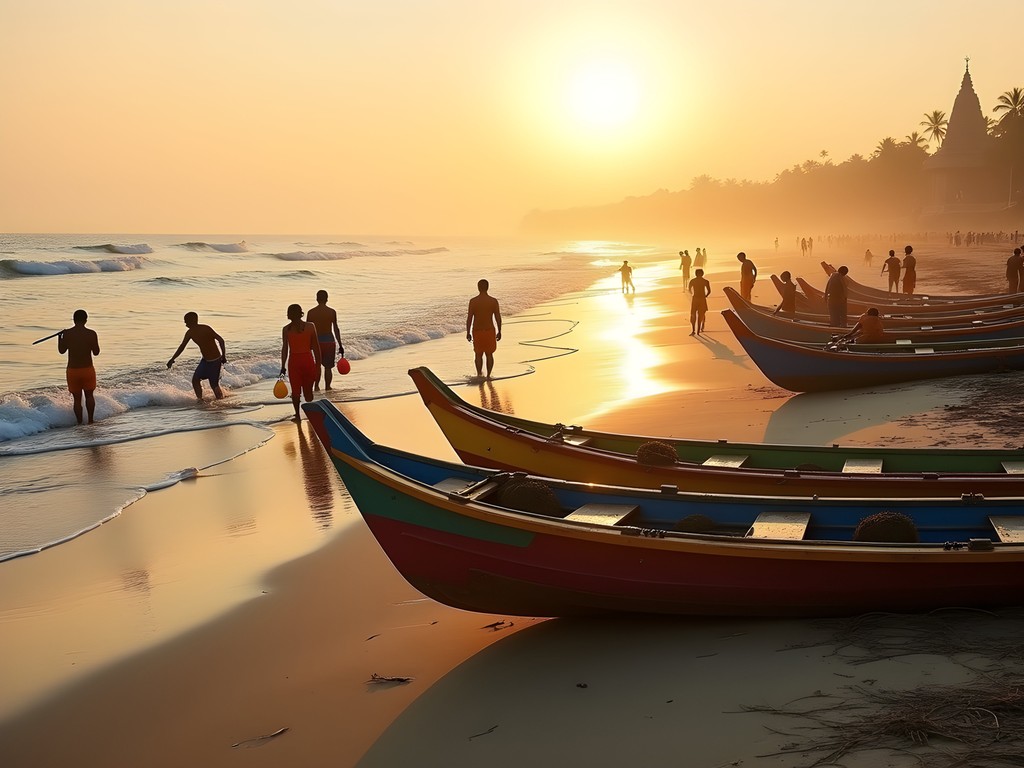
💡 Pro Tips
- Visit the beaches north of town (beyond Swargadwar) for quieter experiences away from the pilgrim crowds
- Respect local customs by dressing modestly, especially near the temple areas
- Try the local sweet 'Khaja' from shops near the beach – a perfect energy boost during beach explorations
Paradise Found: Agonda Beach, Goa
I'm ending this journey with a confession – while this article promised beaches beyond Goa, I must include Agonda as the exception that proves the rule. Located in South Goa and far from the commercial beaches of the north, Agonda represents what makes the perfect beach experience: pristine natural beauty maintained through conscious development and community involvement.
What sets Agonda apart from Goa's famous beaches is its commitment to low-impact tourism. A local ordinance prevents permanent structures close to the shoreline, resulting in seasonal beach huts that are dismantled during monsoon season, allowing the beach to naturally regenerate. This approach creates a harmonious relationship between tourism and environmental preservation that other destinations could learn from.
I spent my final four days in a simple bamboo beach hut, falling asleep to waves just meters from my door. The 3km crescent of silver-white sand offers plenty of space even during peak season, with the northern and southern ends often completely empty. Unlike North Goa's party atmosphere, Agonda attracts a more mindful traveler seeking connection with nature rather than nightlife.
The village behind the beach remains authentically Goan, with local life continuing largely unchanged despite tourism. Morning walks revealed fishermen mending nets, children heading to school, and elders gathering at the small village square – scenes that reminded me of the coastal Mexican villages my mother's family came from.
For wildlife enthusiasts, the protected Olive Ridley turtle nesting site at the southern end provides opportunities for responsible observation during hatching season. Through a local conservation group, I participated in a night patrol, walking the moonlit beach looking for nesting turtles – an experience that connected me to the rhythms of nature in a profound way.
While Agonda offers enough restaurants and basic shops to be comfortable, it lacks the commercial development of other Goan beaches – no large resorts, no shopping complexes, no water sports touts. This deliberate simplicity creates space for genuine relaxation and reflection. My days developed a natural rhythm: morning swims, afternoon reading sessions under palm trees, and evenings spent at beach cafes where local musicians often performed.
For those planning extended beach stays, I highly recommend bringing a quality beach tent – the shade makes all the difference during midday heat, and most local shops only offer basic umbrellas that provide limited protection.
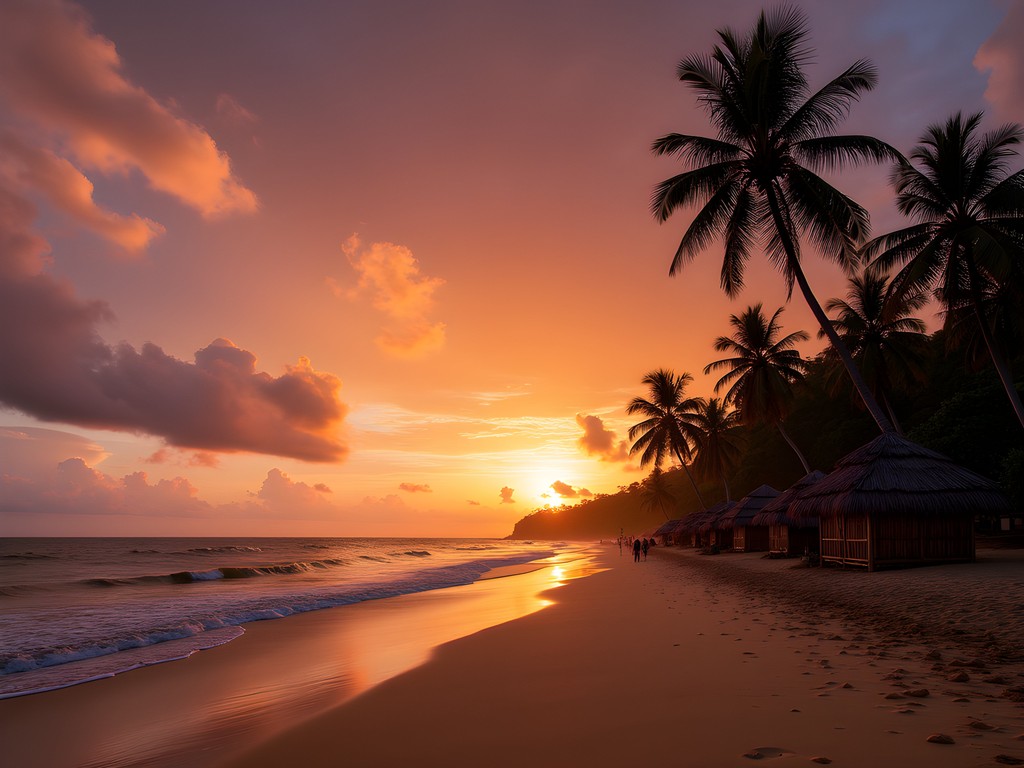
💡 Pro Tips
- Book beach huts at least a month in advance during peak season (December-February)
- The northern end of the beach offers more seclusion and better swimming conditions
- Support the local sea turtle conservation efforts by donating or volunteering through the Goa Forest Department booth near the beach entrance
Final Thoughts
As my flight lifted off from Goa's airport, carrying me back to my adopted Brazilian home, I found myself already composing mental melodies inspired by these coastal discoveries. South India's beaches offered me more than just beautiful shorelines – they provided rhythms, traditions, and connections that will influence both my music and my approach to travel for years to come. The beauty of these lesser-known coastal gems lies not just in their pristine sands or clear waters, but in their authentic connection to communities that have lived in harmony with the sea for generations. If you're seeking a beach experience that transcends the typical tourist track, South India's coastline awaits with open arms and endless horizons. Just tread lightly, respect local customs, and allow yourself to sync with the natural rhythms that make these shores so special. The ocean has always been my greatest teacher – and along South India's coast, its lessons are particularly profound.
✨ Key Takeaways
- The best beach experiences in South India combine natural beauty with cultural authenticity
- Traveling just beyond popular destinations often reveals pristine beaches with fraction of the crowds
- Supporting local communities through homestays and local guides creates more meaningful travel experiences
- Winter (November-February) offers ideal weather conditions for exploring South India's coastline
📋 Practical Information
Best Time to Visit
November through February (winter months)
Budget Estimate
$50-100 per day including accommodations, food and local transportation
Recommended Duration
2 weeks minimum to explore multiple beach destinations
Difficulty Level
Moderate (Some Locations Require Local Transport Arrangements And Basic Travel Self-Sufficiency)

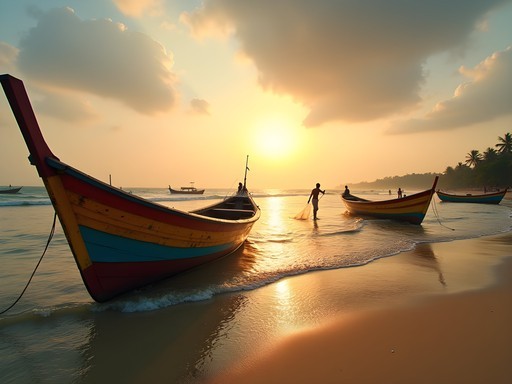







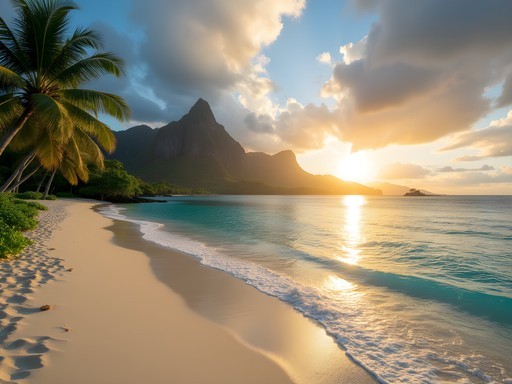

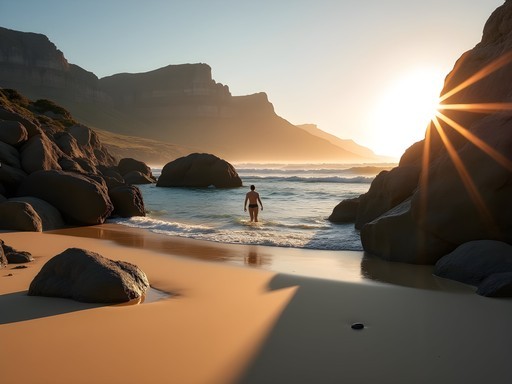
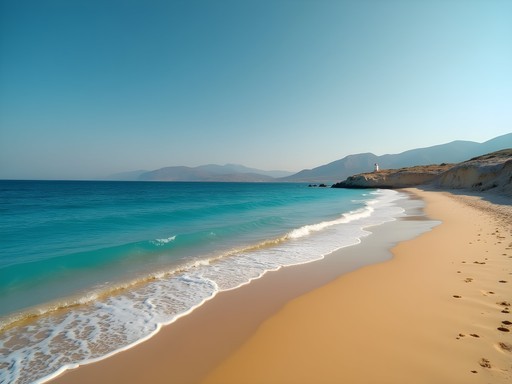
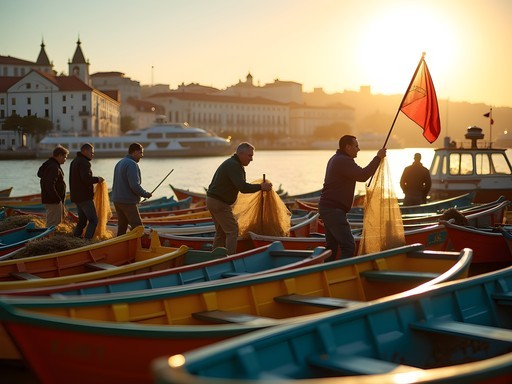
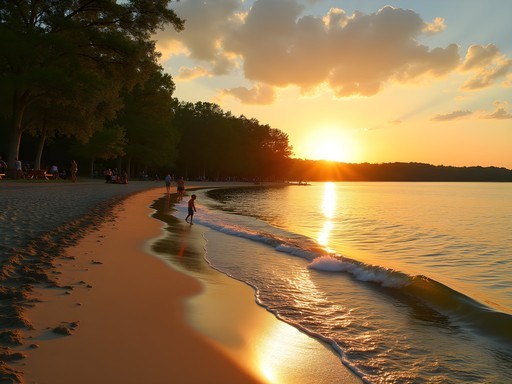
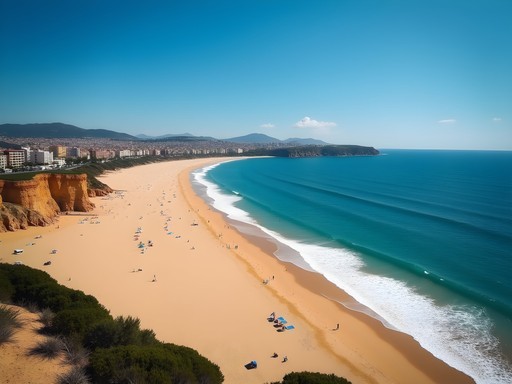

Comments
Bryce Diaz
Ariana, your post brought back so many memories! I spent three weeks beach-hopping along this coast last year. Gokarna was the highlight - Om Beach has that perfect crescent shape, and the hike between beaches is spectacular. For anyone planning to visit, I'd add Agonda in South Goa to this list too - it's technically in Goa but feels worlds away from the party scene. The dolphin spotting there at sunrise is magical. One tip for getting between these beaches: the local buses are incredibly cheap but prepare for an adventure! I found that having a physical map was essential since internet connectivity was spotty in some areas.
escapefan3034
Did you feel safe on the buses as a solo traveler? Thinking of doing a similar trip in December.
Bryce Diaz
Absolutely! The buses were full of locals and other travelers. People were incredibly helpful when I wasn't sure where to get off. Just keep valuables close and you'll be fine!
wanderlust_soul
Been to Goa 3 times but never knew about these gems! Thanks for sharing!
hikingqueen
Great post! I've done Goa twice but looking for somewhere quieter. Is Marari Beach good for swimming? And are there decent places to stay nearby?
Bryce Diaz
Not the author but I spent a week at Marari last year. The swimming is excellent - gentle waves and clean water. There are a few good homestays right by the beach where local families cook amazing Kerala meals. Much more authentic than the resort scene in Goa. If you go, don't miss the morning fish market - incredible experience watching the boats come in!
hikingqueen
Thanks so much! Definitely adding it to my itinerary. Did you need a scooter to get around or is everything walkable?
Bryce Diaz
Everything you need is within walking distance on the beach, but I rented a bicycle (₹100/day) to explore the nearby villages. Totally worth it! Make sure you pack your reef-safe sunscreen as the sun is intense and you'll want to protect those coral reefs!
escapefan3034
Just got back from Varkala last month and it's exactly as you described - that cliff backdrop is incredible! We stayed at a small guesthouse right on the cliff edge and the sunset views were unreal. So much quieter than Goa during high season. The beach itself was clean and the water was perfect. Did you try any of the seafood restaurants along the cliff? That grilled kingfish was the highlight of our trip!
hikingqueen
Was it easy to get to Varkala from the airport? Planning a trip there in January!
escapefan3034
We took a train from Trivandrum airport - about 1.5 hours and super cheap. Just avoid the tuk-tuk guys at the station who overcharge tourists!
Taylor Moreau
Excellent write-up, Ariana! I've been to Varkala three times now for business retreats, and your description captures its essence perfectly. The cliff-top restaurants offer some of the most spectacular sunset dining experiences in India. For those planning a visit, I'd recommend staying on the North Cliff area for the best amenities while still enjoying relative tranquility. Also worth noting that some beaches like Gokarna become quite challenging during monsoon season (June-September), so plan accordingly. I always travel with my quick-dry towel as regular towels never dry in the coastal humidity. Looking forward to exploring Karwar on my next trip!
springace
Thanks for the monsoon tip! Planning to go in October - should be okay then?
Taylor Moreau
October is perfect! Post-monsoon, everything is lush green and the crowds haven't arrived yet. You'll have those beaches almost to yourself.
beachcomber22
Those sunset photos from Gokarna are absolutely stunning! Adding it to my bucket list right now.
springace
Finally! Someone talking about beaches beyond Goa! Marari Beach looks incredible!
Taylor Moreau
Marari is truly a hidden gem! I've been there twice on business trips and always extend my stay by a few days. The lack of crowds makes it perfect for morning walks.
springace
Really? Is it easy to get there from Kochi?
Taylor Moreau
About an hour by taxi from Kochi. You can also take local buses but they're less reliable. Worth the journey though!
tripseeker
Great post! When's the best time to visit these beaches? I want to avoid monsoon season but also don't want to go when it's super hot.
Jean Wells
December through February offers the most pleasant climate - warm days around 28-30°C, cooler evenings, and minimal rainfall. November and March are good alternatives with slightly fewer tourists. Avoid June-August (monsoon) completely for these coastal areas.
tripseeker
Thanks so much! January trip it is then!
Jean Wells
Ariana, your article resonates deeply with my experience of South India's coastline. Having traveled extensively through this region last year, I can confirm that Varkala offers a fascinating juxtaposition of spirituality and leisure that's unmatched elsewhere. The cliff-top path lined with shops and cafes provides spectacular sunset viewing points. One observation I'd add: the northern end of Varkala beach (beyond Papanasam) becomes progressively quieter and more pristine - perfect for those seeking true solitude. For accommodations, the family-run guesthouses set back from the cliff offer better value and authentic experiences than the tourist-facing cliff-top options. I documented my three-week journey through these coastal areas with my travel journal which I highly recommend for fellow solo travelers.
travelmate
Just got back from Marari Beach last month and it's exactly as you described - peaceful fishing village vibes with none of the crowds! We stayed at a small homestay run by a local family who cooked the most amazing seafood curry I've ever had. The beach was practically empty most mornings. Definitely the perfect antidote to Goa's party scene when you need some downtime.
tripseeker
Was it easy to get there from Kochi? Planning my first India trip!
travelmate
Super easy! We took a local bus from Kochi - about 1.5 hours and cost almost nothing. Tuk-tuks are another option but negotiate hard on the price.
Venture X
Premium card with 2X miles, $300 travel credit, Priority Pass